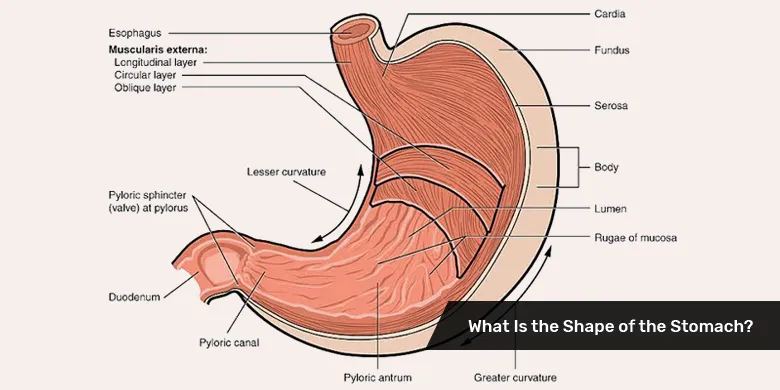What Is the Shape of the Stomach?
If your abdomen aches, how will you determine if the pain is in the kidneys, the liver, or the stomach as all these organs lie in the abdominal region? The location, shape, and orientation of the stomach can help you to locate the origin of that nuisance. Here you will get answers to the questions, like:
- What is the shape of the stomach?
- Which part of this muscular organ gives it its characteristic appearance?
- What is the orientation of the stomach in the abdomen?
- How does the form help the organ effectively execute the function assigned to it?
Before delving deep into the question, “What is the shape of the stomach?” it is pertinent to talk about its function and distinct parts in brief. Defined as an elastic, muscular, hollow pouch, the stomach not only partly digests and temporarily stores food but also produces secretions that aid in the process of digestion.
External examination of the organ shows that it is divided into five main parts. Moving down the digestive tract, the divisions of the stomach are the cardia, fundus, body, antrum, and pylorus. The first part, the cardia, lies just below the diaphragm (the membrane separates the thoracic cavity from the abdominal cavity). The food coming from the esophagus has to pass through this part to enter the stomach.
Location of the Stomach in Brief:
The stomach lies in the left part of the upper abdomen, beginning just below the diaphragm. So, if you feel pain to the left of your belly, there is the possibility that its origin would be in the stomach. You should consult your healthcare provider for accurate diagnosis and appropriate treatment.
What is the shape of the stomach?
Did you know your stomach is approximate “J” shaped? There are two important factors contributing to its J-like appearance, viz. the orientation of the organ in the abdomen and upward curvature of its final two parts. Looking at its placement in the abdomen, it lies vertically along the direction of the digestive tract. It gives the letter ‘J’ its stem, i.e. the straight, vertical part. And the descender or the curved part of the alphabet comes from the upward curvature of the antrum and the pylorus.

Fig. 1: Shape Of The Stomach
The shape, texture, and orientation of the stomach play an important role in the execution of the function assigned to it, i.e. the churning of the food and digestion of its protein content. All these factors allow the systematic passage and processing of the food contents through different parts.
What Is the Shape of Stomach? – Fast Facts:
Andrew T. Raftery and co-authors in their book “Basic Science for the MRCS E-Book: A revision guide for surgical trainees” give various astonishing facts about the shape of the stomach. Some of them are listed as under:
Two Surfaces:
Your vital digestive organ, the stomach, has two surfaces, i.e. the anterior and the posterior.
Two Curvatures:
The two curvatures – greater and lesser – are visible as you examine the shape of the stomach.
Two Openings:
Your stomach has two orifices. The upper orifice, formed by the cardia, serves as the entry point of the food into the stomach. On the other hand, the lower orifice, formed by the pylorus, is the exit point of the partly digested food into the duodenum.
Stomach Divisions Forming Different Parts of “J”:
It can be noted that the upper three divisions of the stomach, namely the cardia, the fundus, and the body make up the straight, vertical part of the “J”, while the lower two divisions, namely the antrum and the pylorus, turn upward and to the right to make the lower rounded part of the letter.


